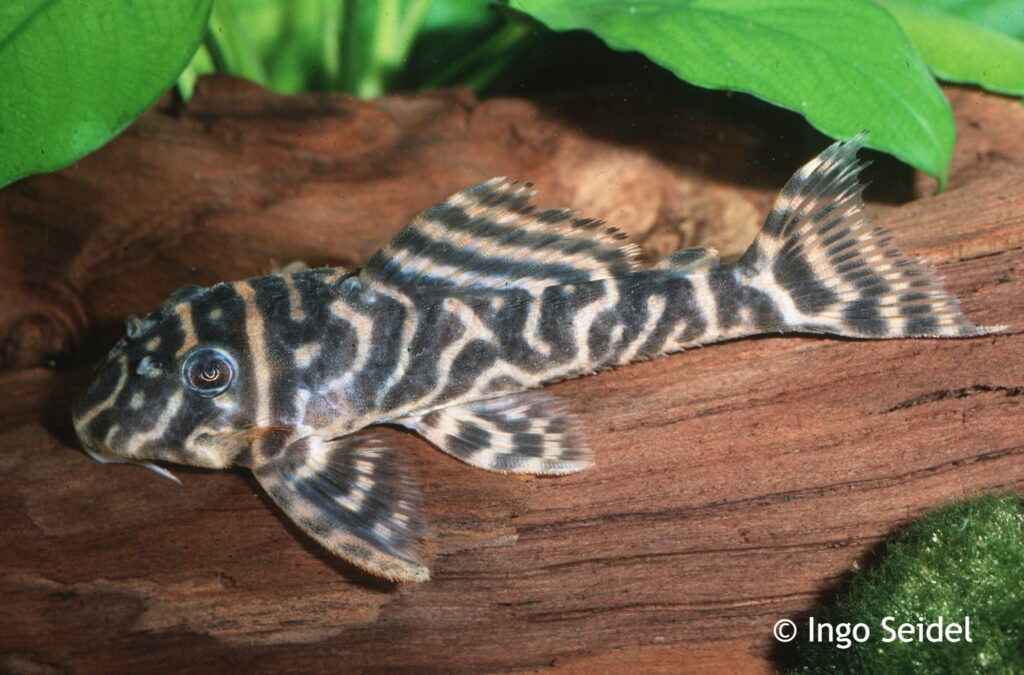
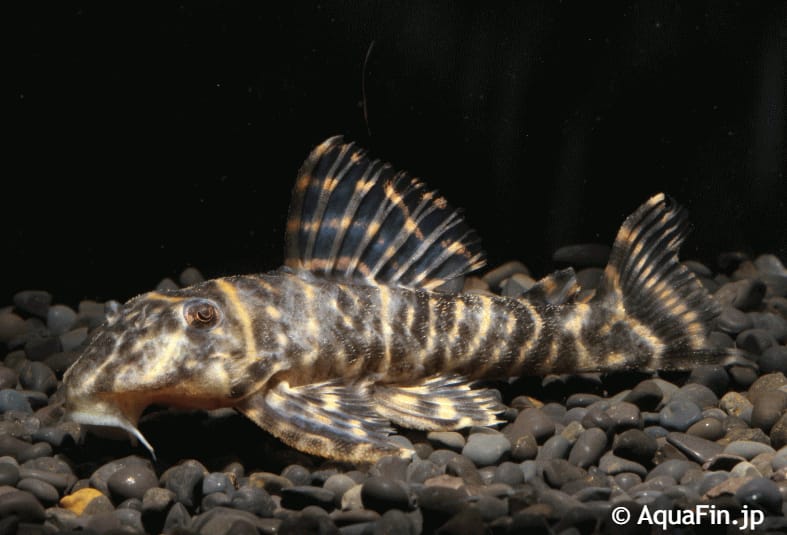
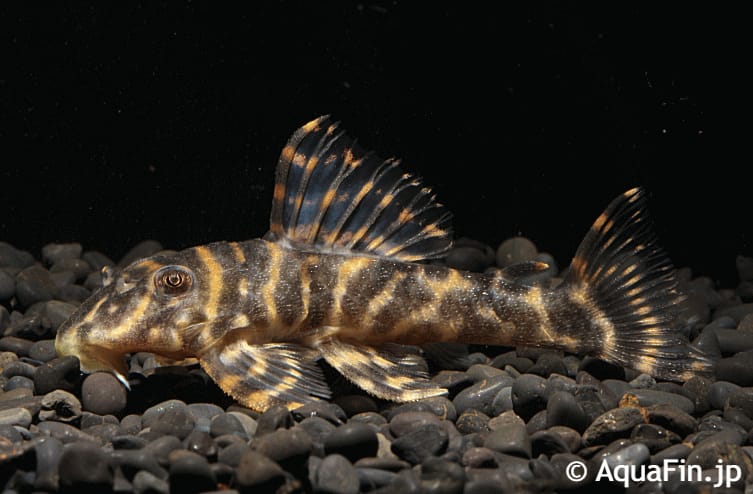
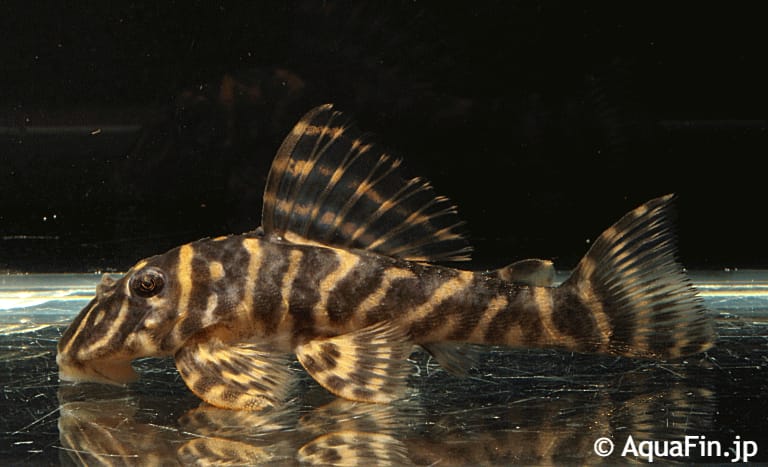

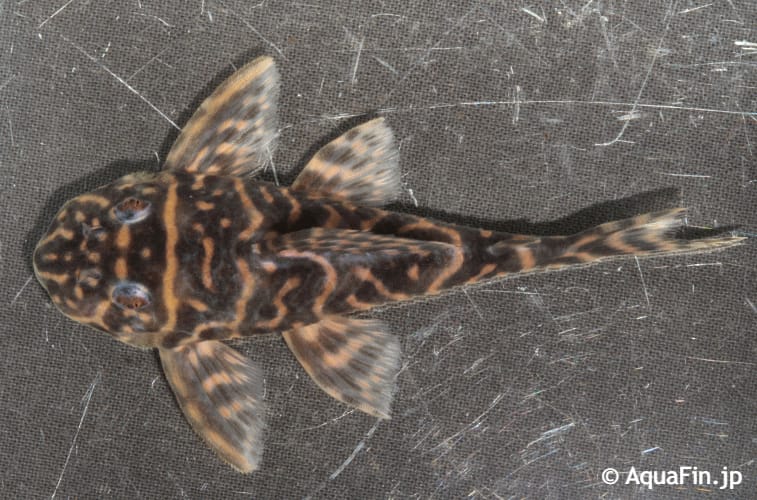


By Cachoeira da Lontra, Rio Curuá (Brazil), above a monumental waterfall, Ingo Seidel & Co. found 8 specimens of L428 between the rocks in strong current. It has never been collected for the ornamental trade in Europe or the US, but it has been imported to Japan and possibly other Asian countries in recent years.
Facts:
Name: Hypancistrus sp.
Trade names: L428
Origin: Rio Curuá, Brazil.
Maximum size: 12 cm / 5”
L428 reminds a little of L270 from Rio Curua-Una (on the southside of the Amazonas) and L316 from Rio Jari but has a different pattern in the fins and on the head. Compared to L316, L428 is more gold / brown in colour. There is also a striking similarity to the H.debilittera group from the Orinoco system in Colombia and Venezuela.
They need an aquarium set up consisting of lots of hiding places in the form of rocks, wood and of course specially made caves that suit their measurements. In these the males will eventually guard their offspring. They prefer water that is warm (27-30 C), soft and slightly acidic. Most of all it should be well oxygenated and clean, so a good filtration system and frequent water changes are essential. Among themselves they are peaceful, although males may quarrel for caves and females can sometimes be badly injured or even killed during the breeding-trapping in the male’s cave. Males develop longer odontodes on their pectoral fins and on their cheeks and have broader heads. Hypancistrus are mostly carnivorous, so a selection of crustaceans, insect larvae and fish meat should be offered along with high quality dried foods that also contain some vegetable matter.
More info:
